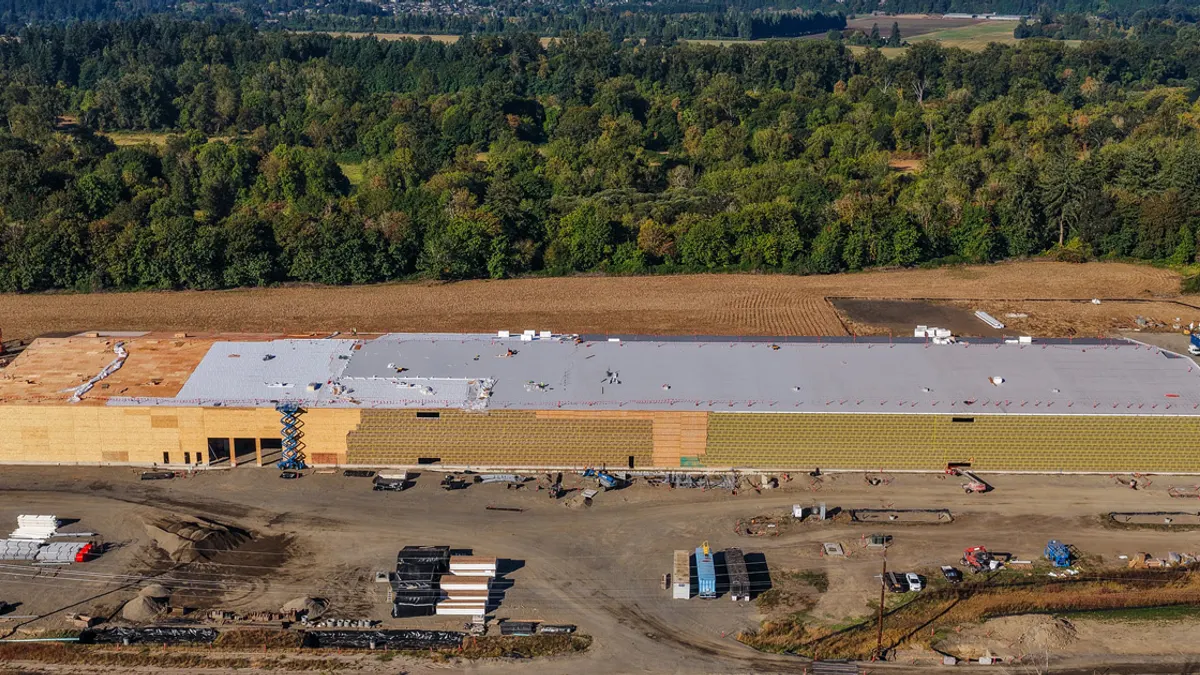The last few years were dominated by cloud migrations, and the virtual platform for storing and exchanging data is set to serve as the foundation for the modern digital age.
Many companies use the cloud and are preparing for what the next wave of cloud technology can do for their businesses. During 2018, the new cloud focus will settle on diversity of services and products and interoperability across platforms.
As the market changes, so too will its players, and this year is bringing significant maturation to cloud players and products. Here are five expanding cloud trends construction industry executives should know about.
1. The cloud is more than storage
For many companies, the cloud started off as an Infrastructure as a Service (IaaS), but now it's more than a repository for company data. AWS, for instance, offers 20 categories that contain one to 15 products and tools. And AWS isn't even a player in the Software as a Service (SaaS) market, which Microsoft Azure dominates, followed by Salesforce, SAP and Oracle.
Cloud vendors can no longer just have a reliable cloud portfolio; they need a diversified one, with a host of big data, artificial intelligence, meta language, security, developer, mobile, management and storage tools. There are enough market players and cloud products that contractors can find the tools that best fit their needs.
2. Edge computing allows for analyzing data in real-time
Edge computing optimizes cloud computing by forgoing processing in a data center or the cloud itself, instead analyzing data locally and in real-time. Gateway hardware's ability to aggregate data and analyze it in a local mini cloud has followed the sharp increase of devices connected to the internet.
The IoT is expected to boom in 2018 and the following years, and construction companies with connected devices may need edge computing to drive faster, better insight. By pushing cloud and edge computing in conjunction, companies will improve their service-oriented models with "a delivery style that allows for executions of disconnected aspects of cloud service," according to Gartner.
3. Microsoft and Google battle for cloud dominance
The No. 2 and No. 3 cloud providers, whose cloud portfolios matured greatly throughout 2017, are gunning for No. 1 AWS. Microsoft and Google are the only providers to hold a significant share in the IaaS, PaaS and SaaS public cloud markets.
Google executives expect the company's cloud business to generate as much revenue as its advertising arm – though the company has extended the timeline for this goal past 2020 – and senior vice president of Google Cloud, Diane Green, is optimistic enough to posit that they may reach No. 1 cloud provider by 2022.
Microsoft, meanwhile, has made Azure the backbone of its digital future, and widespread familiarity with its other enterprise products makes the platform a natural extension for many companies.
Smaller cloud players, such as IBM and Oracle, will keep plugging along, but Alibaba is worth paying special attention to. The Chinese company has seen steady growth in its cloud business worldwide and is looking to break more into the U.S. market. If it comes in with lower prices and more tailored offerings, Alibaba could find success.
4. Kubernetes offers simplicity and flexibility
Kubernetes orchestrates computing, networking and storage infrastructure, providing much of the simplicity of Platform as a Service (PaaS) with the flexibility of Infrastructure as a Service (IaaS), and enables portability across infrastructure providers
Kubernetes appeared in headlines a lot more in 2017, with tech companies in succession announcing adoption of the open-source container orchestration system, including AWS, Microsoft and Oracle. As more services are built on the containerized infrastructure, Kubernetes apps for functions such as logging, configuration and security will abound and vendors will use containers to deliver applications over virtual machines, according to CoreOS.
As containerization spreads, security issues will undoubtedly raise some questions. News of widespread vulnerabilities has racked the tech industry, so the project needs to stay ahead of the curve with its patches and upgrades.
5. Interoperability lives within and across the cloud
Many companies take a hybrid cloud approach, which is a cloud computing environment that uses a mix of on-premises, private cloud and third-party, public cloud services with orchestration between the two platforms. Juggling multiple clouds can prove difficult – and a universal cloud management tool is not worth waiting on. Hybrid stacks, such as Azure Stack and VMware Cloud on AWS, facilitate the hybrid-cloud model, but there is still work to be done.
The growing environment demands a more heterogeneous cloud, with tools that work across vendors. Such interoperability will connect business operations within the hybrid cloud model and between businesses. In the future, construction companies may forgo arrangements with incompatible clouds in favor of more convenient options.






















